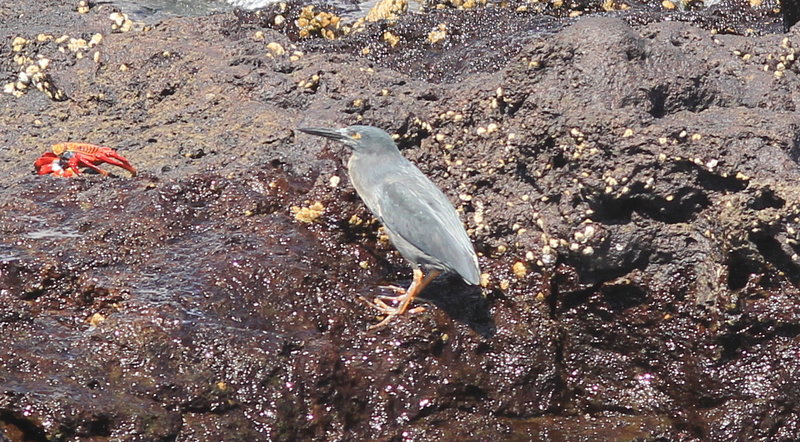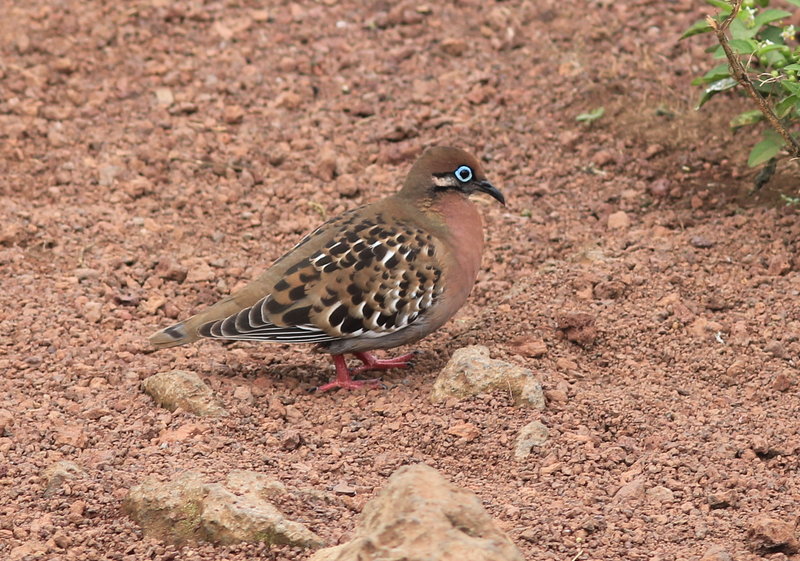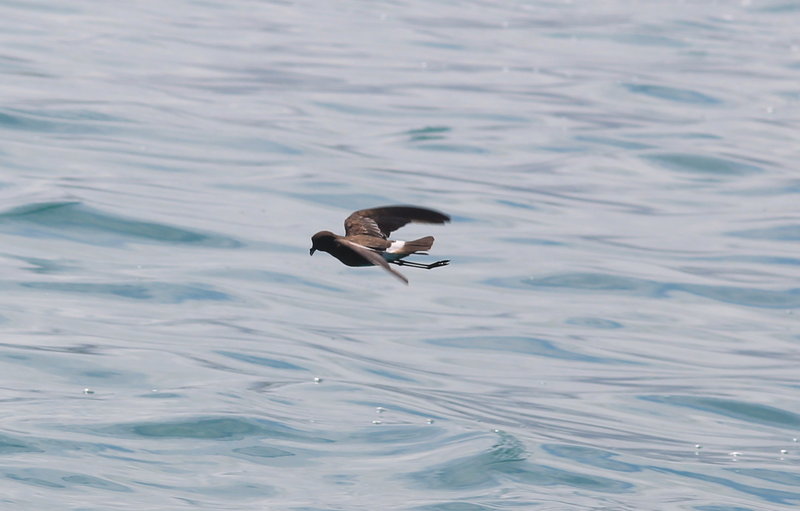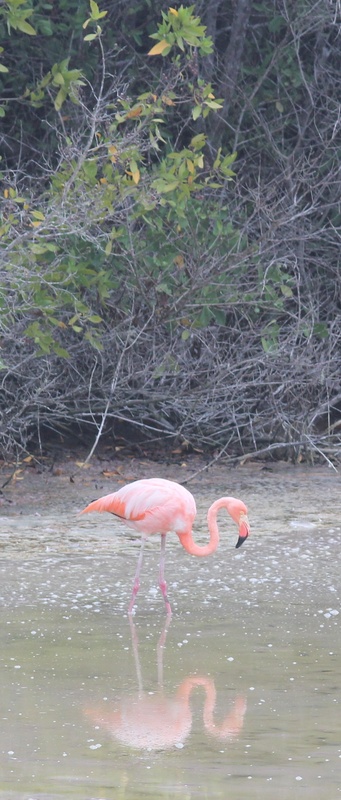In January, my colleague Sarah Gibbs and I journeyed to the Galapagos Islands with 24 Colby College students. I was able to visit two islands I had not visited on a trip to those wonderful islands last year.
We flew from Quito to the airport on San Cristobal. The immigration line extended out of the small terminal. That wait allowed us to watch a pair of cactus finches building a nest in a large cactus adjacent to the terminal. The cactus finch is one of 13 species of Darwin’s finches, found only in the Galapagos.
We took a bus ride into Puerto Baquerizo Moreno, the main town on San Cristobal, and checked into our hotel. A Chatham mockingbird was perched on the windowsill of my room. Four endemic mockingbirds occur on the Galapagos and the Chatham is only known to be in San Cristobal.
That afternoon, we took a long hike along the coast to some highlands. Both magnificent and great frigatebirds were nesting near the tops of some cliffs. Small ground finches and medium ground finches were common.
Along the shore, we saw lava gulls, brown pelicans, striated herons, ruddy turnstones, hundreds of Galapagos sea lions and many marine iguanas.
The next morning, we boarded a couple of boats for the two-hour crossing to the islands of Santa Cruz. Along the way, Galapagos shearwaters and Eliot’s storm-petrels were common.
Our first stop on Santa Cruz was the Charles Darwin Research Station, where captive breeding of Galapagos tortoises is ensuring the survival of these behemoths.
On the grounds, we saw large ground finches, small ground finches, Galapagos flycatchers and Galapagos mockingbirds.
After lunch, we visited Los Gemelos (the twins), two massive depressions at higher altitude.
We were treated to several gorgeous Galapagos doves, warbler finches and a fly-by dark-billed cuckoo. We had a look at a perched cuckoo and a smooth-billed ani later in the day, when we visited some lava tunnels tall enough to easily walk through.
We had an early start the next day for a cruise to the extremely arid island of Bartholome. The sea was calm and the day was sunny.
From the boat, we saw Elliot’s storm-petrels, red-billed tropicbirds, Nazca boobies, blue-footed boobies, brown noddies and massive flocks of red-necked phalaropes.
We saw several swallow-tailed gulls perched on the cliffs of Daphne Major when we sailed close by this small island. Manta rays occasionally jumped out of the water for memorable views.
On Bartholome, we saw lava herons, American oystercatchers and lots of blue-footed boobies.
A Galapagos hawk soared over and was later perched at the pinnacle of the island. Snorkeling provided views of a diversity of fish as well as sea turtles.
We returned to Santa Cruz exhausted but exhilarated. The following morning we were back on boats to the island of Isabela, the largest island in the archipelago.
Approached from the south, this island has a distinctly different feel. The sand is white, not gray as we had seen on other islands.
Mangroves ringed the shoreline and the water was a beautiful blue-green. I could have been convinced I was in the Caribbean, except for the fact there were Galapagos penguins swimming around the boat and dock!
We later got to see a number of penguins and blue-footed boobies up close and personal.
A bus excursion that afternoon included a stop at a large lagoon where American flamingos, white-cheeked pintails and common moorhens were feeding.
The flamingos were magnificent!
The next morning we boarded an open-air bus to the trail head for Cerro Negro, one of the five major volcanoes on Isabela. Cerro Negro was last active in 2005. Our ultimate goal was to climb Volcan Chico, a parasitic volcano on the side of Cerro Negro. The hike was a round-trip of 12 miles.
The views of the caldera of Cerro Negro were amazing; the caldera is about 7 miles across and we could see where the lava from the 2005 eruption had killed some of the vegetation in the caldera.
Small and large tree-finches were seen along the hike to Cerro Negro. Vermilion flycatchers cooperated nicely for everyone in the class.
A few of us got to see Galapagos martins hawking insects over the caldera.
For more details and pictures from our trip, please visit our blog: http://web.colby.edu/galapagos/2011/
Herb Wilson teaches ornithology and other biology courses at Colby College. He welcomes reader comments and questions at:
whwilson@colby.edu
Copy the Story Link
Send questions/comments to the editors.






Success. Please wait for the page to reload. If the page does not reload within 5 seconds, please refresh the page.
Enter your email and password to access comments.
Hi, to comment on stories you must . This profile is in addition to your subscription and website login.
Already have a commenting profile? .
Invalid username/password.
Please check your email to confirm and complete your registration.
Only subscribers are eligible to post comments. Please subscribe or login first for digital access. Here’s why.
Use the form below to reset your password. When you've submitted your account email, we will send an email with a reset code.